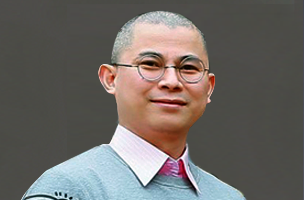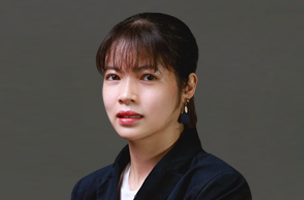Industrial Design in LAOS
Bud & Prairie are fully expert and experienced to advise and assist you with industrial design related matters.
1. Legal Framework
1.1 Law on Patents, Utility Models, and Industrial Designs (2011)
- This law regulates industrial designs, outlining the requirements for protection, the application process, and the rights granted to industrial design owners.
1.2 International Agreements
- Paris Convention for the Protection of Industrial Property: Laos is a member of this convention, which facilitates the international protection of industrial designs and allows for priority claims based on earlier filings in member countries.
- Hague Agreement Concerning the International Registration of Industrial Designs: Laos is not currently a member of this agreement, which means that industrial designs cannot be directly registered through the Hague system.
2. Industrial Design Application Process
2.1 Filing an Application
- Application Submission: To protect an industrial design, applicants must file an application with the Department of Intellectual Property (DIP) under the Ministry of Science and Technology (MOST). The application should include:
- A clear and complete representation of the design (e.g., drawings or photographs).
- A description of the design.
- Information about the applicant and designer.
- Language: Applications must be submitted in Lao or accompanied by a Lao translation if filed in another language.
2.2 Examination and Registration
- Formal Examination: The DIP conducts a formal examination to ensure that the application complies with procedural requirements.
- Substantive Examination: The application is examined to assess whether the design meets the criteria for protection, including novelty and originality. Industrial designs that are not new or lack originality may not be granted protection.
- Publication: Once the application passes examination, the design is published in the official industrial design gazette. This allows third parties to review and potentially oppose the registration.
- Registration: If the application meets all requirements, the design is registered, and a certificate of registration is issued.
2.3 Rights and Duration
- Exclusive Rights: The registration of an industrial design grants the owner exclusive rights to use, license, and enforce the design against unauthorized copying or imitation.
- Duration: Industrial design protection in Laos is granted for a maximum term of 10 years from the filing date, subject to the payment of renewal fees. The protection can be renewed for additional periods.
3. Enforcement and Protection
3.1 Enforcement Mechanisms
- Administrative Enforcement: The DIP can assist in resolving disputes and enforcing industrial design rights. This may involve administrative measures such as mediation or investigations.
- Judicial Enforcement: Industrial design owners can take legal action in Lao courts to enforce their rights. This includes filing lawsuits for infringement and seeking remedies such as injunctions, damages, and the destruction of infringing goods.
3.2 Customs Enforcement
- Border Measures: Customs authorities may assist in enforcing industrial design rights by preventing the importation or exportation of goods that infringe on registered designs. Owners must register their designs with customs to request border measures.
4. Challenges and Opportunities
4.1 Challenges
- Awareness and Understanding: There may be limited awareness and understanding of industrial design protection among businesses and the public, which can hinder effective protection and enforcement.
- Enforcement Capacity: Challenges related to the capacity of enforcement agencies and the judiciary to handle complex industrial design cases and disputes.
4.2 Opportunities
- Economic Development: Laos’s growing economy presents opportunities for innovation and investment in product design, driving demand for industrial design protection.
- International Collaboration: Engaging with international agreements and organizations can enhance Laos’s industrial design system and provide better protection for designers.
5. Best Practices for Industrial Design Protection
5.1 Application and Documentation
- Thorough Preparation: Ensure that industrial design applications are well-prepared, with clear representations and descriptions of the design to meet DIP requirements.
- Legal Assistance: Consider seeking legal assistance from intellectual property attorneys or agents who are familiar with Lao industrial design law and procedures.
5.2 Monitoring and Enforcement
- Regular Monitoring: Monitor the market for potential infringements and take proactive steps to protect industrial design rights.
- Enforcement Strategies: Develop strategies for enforcing industrial design rights, including working with local authorities and engaging in legal actions when necessary.
5.3 International Considerations
- Global Strategy: If operating internationally, develop a global industrial design strategy that considers the protection and enforcement of designs in other countries where business activities are conducted.
Industrial design protection in Laos is governed by national legislation and supported by international agreements. The process involves filing applications, undergoing examination, and obtaining registration to secure exclusive rights. While challenges exist related to awareness and enforcement, opportunities for growth and development in industrial design protection are available. By understanding the legal framework, following best practices, and leveraging opportunities, designers and businesses can effectively protect and manage their industrial designs in Laos.
For further information, please do not hesitate to contact us at bud-prairie@bud-prairie.com.
1. Patentability Search
Patentability search is also known as a novelty search, which helps identify whether or not an idea is novel and involves an inventive step (nonobvious). The most complete searches include all types of prior art to give an inventor or organization a comprehensive look at the technology landscape. A patentability search should be completed during the ideation phase, as well as prior to disclosure.
A patentability search is conducted by examining published patents that relate to your own invention to figure out whether your idea has already been patented. You can also see similar inventions, allowing you to improve and refine your own invention without infringing on someone else’s patent. And you can do all this before you have spent many hours and thousands of dollars on an idea that you can’t patent.
2. Freedom to Operate Search
A freedom to operate search (often abbreviated as FTO) determines how similar your product is to existing patents, and therefore how likely you are to infringe on a patent by making and marketing your invention. You may also see this type of search called a patent infringement search or right-to-use search.
Completing an FTO search early in the innovation cycle helps R&D teams design around existing patents. Later on, the results of the search can identify whether you may need to license other patents to bring your product to market.
3. State of the Art Search
Completing a state of the art search (also known as a product clearance or patent landscape search) allows you to examine the literature related to a specific industry, rather than around a certain technology, which may be applicable across industries. Using a state of the art search helps businesses find competitors and existing products within their field. These insights allow researchers, engineers, and leaders to make strategic decisions at any point within the innovation cycle.
4. Invalidity Search
To assess the strength of a specific patent, companies will use an invalidity search. This is also called a validity search. The results of this search determine whether or not the patent holder can claim infringement. They can also be used to decide licensing fees or value. If an invalidity search finds evidence in the form of existing, yet undiscovered, prior art, the patent should not have been granted and is unenforceable. This type of patent search is completed after a patent is granted.
5. Evidence of Use Search
Some organizations actively seek out products that infringe on their patent rights. This type of search is called an evidence of use search. To find these products, an organization or inventor will review similar patents and look for evidence the patent is utilized in a way that infringes on the searcher’s rights. Evidence of use searches happen after a patent is granted and as it matures.
6. Search Database
There are several databases in which patent searching may be done. Many databases such as USPTO, Google Patents, Free Patents Online, esp@cenet etc. are freely available, while other databases such as ThomsonInnovation, Orbit, Patbase etc. are available on the basis of a subscription. Each of these databases varies in terms of at least one of the following: Data Coverage, Search Engine, Interface.
• Google Patent Search Database. The Google search engine has revolutionized how people use the Internet. …;
• Patentscope. Patentscope is a free database put out by the World Intellectual Property Organization (WIPO)…;
• The USPTO Database…;
• Espace European Database…
The following are some of the largest and most popular patent office databases.
• Canadian Patents Database (CIPO)…;
• DEPATISnet (DPMA)…;
• Espacenet (EPO)…;
• JP-PlatPat (JPO)…;
• PatentScope (WIPO)…;
• U.S. Patent Assignment Database (USPTO)…;
• U.S. Patent Center (USPTO)…;
• U.S. Patent Databases (USPTO).
However, an inventor or applicant can also conduct their own patent search. The inventor or applicant has the advantage of often being more familiar with the art to which the invention relates, including having an understanding of the common knowledge held by persons skilled in the art and the relevant terminology.
Patent drafting is a part of how to patent an idea and is the process of writing the patent description and claims. It is at the core of every patent application. When the patent is issued or allowed, the draft serves as the specification part of the document. The patent applicants have to be more aware that depending on how well the complete specification is drafted and how precisely and correctly the claims describe the invention or the imaginary ‘boundary” is set, the easier it will be to defend it against third parties.
Normally, a patent specification covers the following parts:
• Field of Invention: It generally discloses a field to which the invention generally relates.
• Background: It discloses existing devices or methods related to the field of invention, broadly known as prior art. Background generally discloses prior art and limitations or disadvantages associated with the prior art.
• Summary of Invention: It (i) discloses the objectives of the invention, (ii) generally lists distinguishing features and advantages of the invention for which protection is being sought, (iii) summarizes the main features of the invention to be claimed, and (iv) also includes a broader explanation of the invention and briefly mentions the solution provided by the invention.
• Brief Description of Drawings (if any): If the invention includes any drawings, then this section includes a description of the drawing briefly such that a reader can get an overview of what could be disclosed by the drawing. The drawings are to be prepared in separate sheets as per different guidelines of different jurisdictions. The drawing sheets are filed with the patent specification.
• Detailed Description of Invention: It explains the different features of the invention in detail. Detailed description should be written such that a skilled person in the art can understand the invention solely after referring to this description. All claimed features and their interconnections, if any, need to be explained. In other words, all the claimed features need to be well supported in the detailed description.
• Claim(s): Claims are the most important part of a patent draft. Claims decide the scope of the protection which would be awarded to the inventor when the patent is granted. Claims are broadly divided into two categories, independent claim, and dependent claim. Every patent draft or patent application must contain at least one independent claim. Claims tend to change in course of the examination (narrower in most cases than the originally filed claims.
• Abstract: It is a technical summary of the invention. Generally, the Abstract should disclose the invention sufficiently to enable a person to perform a search for anticipation. The publication of a patent application includes publication of the abstract and representative drawing, if any.
• Drawings: Not all specifications have drawings. Such drawings, if any, would be prepared and submitted to the Patent Office in separate sheets. Different jurisdictions have different rules for allowable drawing sheets.
The significance of patent drafting and its impact on the patent protection should be conveyed to the SMEs, start-ups and inventors along with the information on importance of the patent protection in general. They should be informed that in case of any opposition or challenging the validity of their patent by a third party, a poorly drafted patent will be easily invalidated.
An opposition proceeding is an administrative process available under the patent law of many jurisdictions which allows third parties to formally challenge the validity of a pending patent application (pre-grant opposition), of a granted patent (post-grant opposition).
Once the patent application is published, an opposition may be filed within a certain time period prescribed under the applicable law. The opponent shall state the grounds for opposition and submit any evidence. If no opposition is filed during that period, the substantive examination will be carried out.
In the meantime, an applicant for a patent, any of whose claims has been twice rejected, may appeal from the decision of examiners to IP Vietnam, having once paid the fee for such appeal.
LET'S GET STARTED
Please fill in and submit the form for our assistance.




